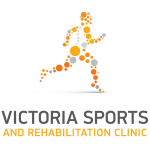The Tempero-mandibular joint (TMJ) is the anatomical name for your jaw. It is composed of the mandible and temporal bone, which is part of the cranium. It has some of the strongest muscles in the body such as the masseter, pterygoids, temporalis and hyoid muscles. These help move the jaw for speaking, eating and yawning etc however constant tension of these, just like any other joint or muscle in the body, can cause many different dysfunctions.
Jaw clenching is extremely common and can be caused by stress, through exercise, concentration and many other factors. Clenching places a constant load through the joint and tension through the muscles which often leads to fatigue and spasm. It can also cause damage to your teeth and change the position of the jaw due to uneven tension.
Grinding occurs when the jaw is clenched, then moved in a forward and back or side to side direction which can wear down your teeth and put a lot of strain through the musculoskeletal structures. This commonly occurs while people sleep and especially at high periods of stress.
When these structures are impacted they can cause clicking, crepitus (popping or grinding sounds in the joint), muscle tightness & pain, headaches and decreased range of motion. This can be especially hard with eating hard foods, chewing and yawning. Studies have shown that TMJ dysfunction occurs in up to 25% of the population and occurs slightly more in females that are in the 20-50 age group.
As Osteopaths, we are trained to treat the TMJ using a variety of treatment techniques. Quite often, if a patient presents with headaches or neck pain we will question about and assess jaw involvement as it can influence the upper cervical spine. Treatment of the jaw includes soft tissue massage, muscle and joint stretching and inhibitory techniques, all of which can be applied internally and externally. Dry needling is also another extremely effective technique for TMJ dysfunctions which uses small acupuncture needles externally to trigger points in muscles around and on the jaw. We also teach our patients home stretches, massages and exercises that they can complete to help give them relief.
Ultimately, the cause of the clenching and grinding needs to be addressed to prevent further irritation. Dentists commonly recommend the use of bite/mouth guards, retainers and splints to help protect your teeth, however it is important to have one specifically fitted and moulded to the shape of your mouth. Treatment by an Osteopath can be extremely helpful during this adjustment time as these mouth pieces can sometimes cause some irritation as you are getting used to them. Stress management strategies have also shown to be helpful in decreasing jaw clenching so you may find the use of relaxation techniques such as hot baths, yoga or mindfulness/meditation helpful in decreasing stress levels.
If you have any questions about TMJ dysfunctions or have been suffering from pain please make an appointment with your Osteopath to get some relief!
